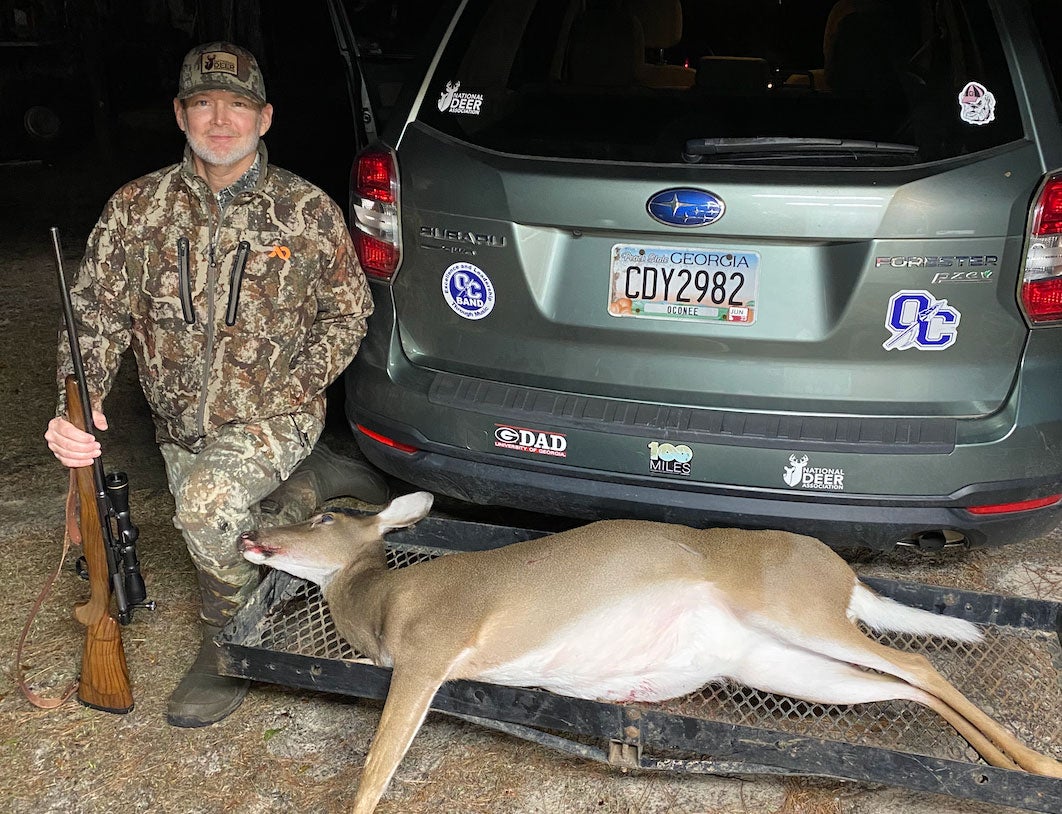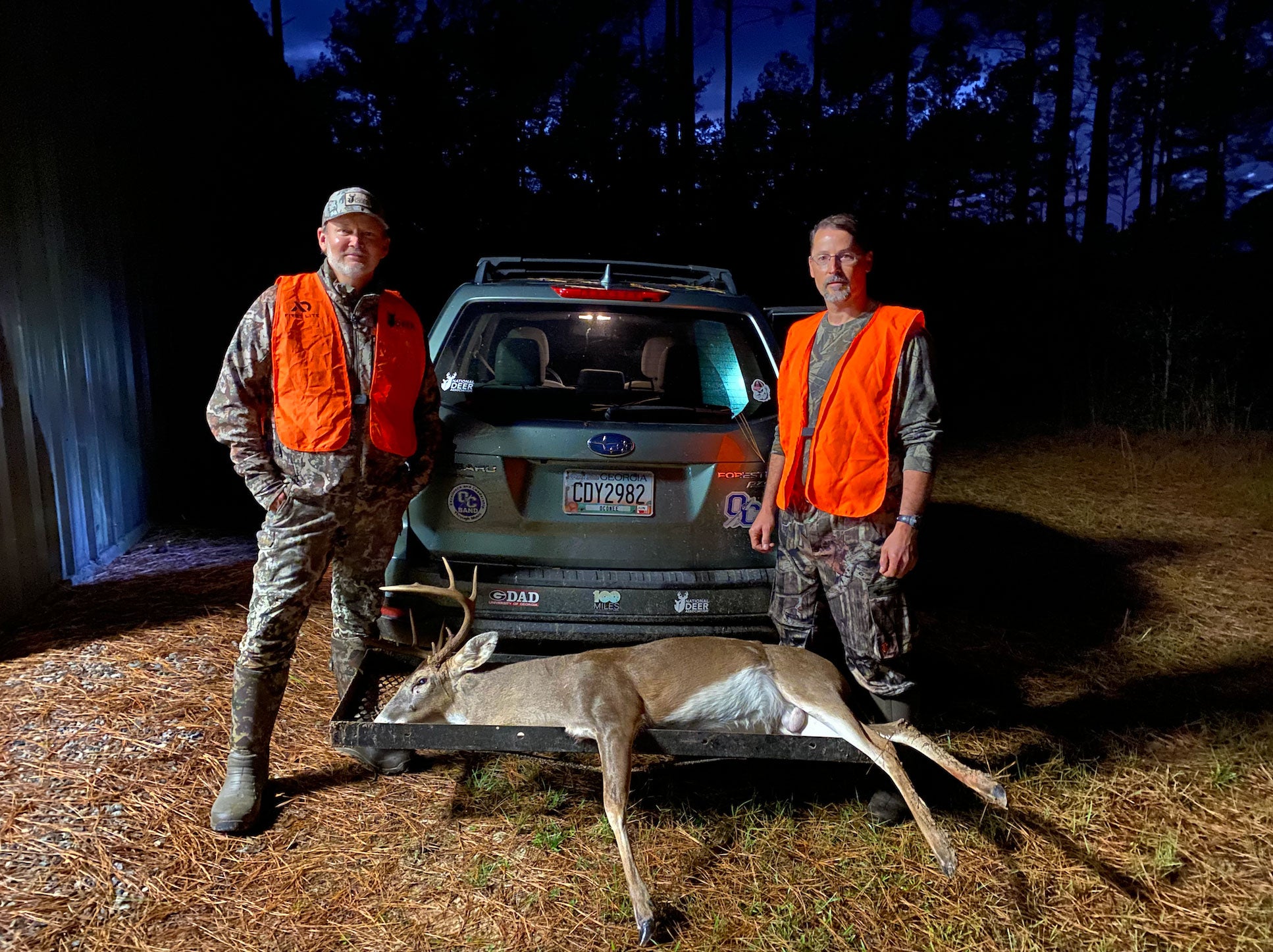Hunt Trophy Does, Turn Off the Damn Phone, Befriend Your Neighbors, and Make Deer Hunting Fun Again

Hunting and killing a mature whitetail buck is hard. Repeating the feat, season after season, is really hard. And when your hunting season isn’t working out the way you planned, it can get pretty frustrating, too. Especially when you open Instagram and discover that every influencer and their brother has killed a “giant”—or so it seems.
This time of year, a lot of serious deer hunters start to get grumpy, bitter, or downright pissed as their seasons begin to unravel. That’s a shame. Because in my opinion, the single most important and honest reason to hunt deer is … because it’s fun.
If you’re not having fun, then it’s time to rethink your entire approach. Lindsay Thomas Jr., the chief communications officer for the National Deer Association, is here to help. Thomas has been a member of the organization’s staff since 2003. Throughout his career as an outdoor journalist, he has written and published numerous articles on deer management and hunting, and he has edited and contributed to several books, including Quality Food Plots. He’s also heard from a lot of disgruntled hunters.
You can listen to my full interview with Thomas in the podcast below and read on for some ways to reframe your deer season and hunting strategy.
Set Realistic Expectations
Thomas says one of the most common reasons that deer hunters become disillusioned is because they have unrealistic expectations going into the season. Before you decide on “160 or bust,” consider where you hunt and the time you have available. You’ve also got to know the history of deer management in the area.
“You don’t start out with quality deer management saying ‘I want to kill a 5.5-year-old buck’ … because just think, how long does it take to produce a 5.5-year old buck?” Thomas says. “If you’ve never killed a 2.5-year-old buck, that’s where you should start.”
Focus on Age, Not Score
Just forget about score for the rest of the season. Instead of judging bucks by the size of their rack, start evaluating them by their estimated age. Most of us don’t have access to prime private land that regularly produces 160-class deer. Some entire regions of whitetail country aren’t known for producing “big” bucks. That’s okay. Happily, deer grow old in every corner of whitetail country.
“Age is the great leveler,” Thomas says. “For me, in coastal Georgia, a 5.5-year-old buck is the same as a 5.5-year-old buck in Ohio. Who cares what they score. [Mature bucks in both places] are difficult to produce, and see, and hunt … I can set the goal of wanting to see and kill a 3-year-old or 4-year-old or 5-year-old buck anywhere there are whitetails, and that’s achievable.”
Read Next: How Long Do Deer Live?
Hunt Trophy Does
Thomas considers himself a doe hunter. He targets mature does to manage the population and fill the freezer, but also because it’s a challenge.
“An old doe to me is just as smart and just as cagey as a mature buck, if not more so,” he says.
Last year, Thomas killed an 8.5-year-old doe with his bow and now he has the deer’s jawbone hanging in his office. Thomas and his hunting buddies get their harvested deer aged by Matson’s Laboratory (and you can too). If there’s not an old buck to target, he’ll keep his season interesting by trying to pattern and kill the oldest doe on the property.
“There really is such a thing as a trophy doe,” Thomas says.
Thomas also recommends not waiting to harvest does until the end of the season. If you’ve got a doe harvest goal to meet and you’ve got a doe in range, take the shot. Having a doe on the ground can actually draw in rutting bucks, Thomas says.
Meet Your Neighbors
Many serious private land deer hunters pass 2.5-year-old and 3.5-year-old bucks and then get angry when their neighbors kill those same deer. How can you ever grow mature deer when the neighbors kill them early? Thomas’ advice is to stop worrying about individual bucks.
“One of the biggest mistakes hunters make as deer managers is thinking in terms of individual deer rather than a population,” he says. “You’re trying to manage a population, not individual animals.”
Most times, individual bucks have a “non-measurable impact” on a deer population. If, overall, you’re moving bucks into an older age class, then it doesn’t really matter if a few young bucks are killed by neighbors or hunters on your property.
“The other thing about neighbors is that we often imagine a worse situation than [reality],” Thomas says. “When you go to meet the neighbor, most of the time they’re trying to do what you’re doing.”
Hunting is way more fun when you have a good relationship with your neighbors, so be friendly. In the best cases, you can share information that will help everyone have a better season—like, for example, if you make a bad shot on a big buck. If you’re cool with your neighbors, they’ll let you know if he shows up on their trail cameras. They’ll also let you know if they’ve killed him, which prevents you from chasing a ghost for the rest of the season.
Take Someone Else Hunting

Want to shake up your season a little bit? Invite some new folks out to hunt your place. These could be new hunters or friends who don’t have ground to hunt themselves. Sacrificing the disturbance to the property will be well worth the camaraderie of a good old deer camp.
“In our Field to Fork program, one of the things we emphasize is the social support of hunting, because that’s really what keeps new hunters involved in hunting,” Thomas says.
But that social element is just as important for veteran hunters who have been doing all-day sits by themselves for week after week. If nothing else, mentoring a new hunter will help you see deer hunting through a beginner’s eyes when everything is new and exciting.
Hunt Public Land
If you’re hunting the same tract of private land year after year, you can start to lose the sense of adventure that hunting should bring. Thomas suggests mixing it up and trying a public-land hunt or two each season. That will force you to explore a new area and try some new tactics, rather than sitting in the same old box blind day after day.
“Go back to public even if you own some private land,” Thomas says. “Going back to a quota hunt or a public-land hunt can rekindle your enjoyment of deer hunting … and also rekindle your appreciation of owning private land.”
“Plus, I’ve met some of the best people I’ve ever encountered in my life on public land deer hunts,” Thomas says.
Read Next: Aaron Warbritton on How to Hunt the Rut on Public Land
Turn Off the Phone
The science is in: Social media makes us unhappy (or something like that). So why bring an agent of unhappiness into your happy place? When you’re hunting, turn your phone off and stash it in your pack. Cutting out the distraction is the only way to enter that near-meditative state that all good hunters strive for. Free from social media, text messages, and emails, you’ll start to pick up on all of nature’s little details, and you’ll probably sense that big buck coming in just a little sooner.
“I tell people that the number one way to see more mature bucks during the rut is to leave your phone at the bottom of the tree,” Thomas says.
The post Hunt Trophy Does, Turn Off the Damn Phone, Befriend Your Neighbors, and Make Deer Hunting Fun Again appeared first on Outdoor Life.
Articles may contain affiliate links which enable us to share in the revenue of any purchases made.
Source: https://www.outdoorlife.com/hunting/make-deer-hunting-fun/




